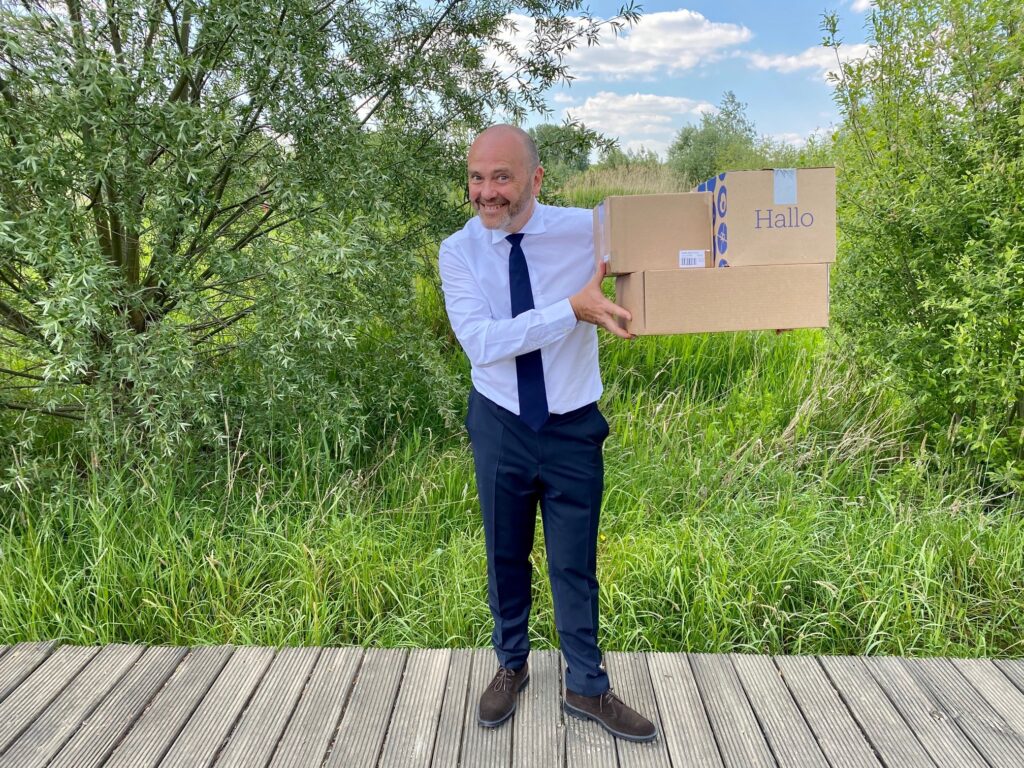Jack Hamande, executive board member at BIPT and board member at ERGP, reveals how posts are driving the ‘phygital revolution’. Don’t miss Jack’s presentation, ‘The future is post! Exploring new frontiers’, at the forthcoming, free-to-attend Parcel+Post Expo Conference, in Vienna, October 12-14, 2021.
What is your presentation about?
 We are on the verge of technological, legal and behavioral revolutions opening new business frontiers between different sector players.
We are on the verge of technological, legal and behavioral revolutions opening new business frontiers between different sector players.
Postal operators have been forced to speed up their digital transformation. The health crisis has accelerated the development of their new phygital services. This ‘phygital’ refers to all the techniques and processes needed to facilitate connections between physical entities and e-commerce activities. During my presentation at Parcel+Post Expo, we will go through the evolutions in all domains and, in particular, explore the new frontiers between the digital and postal worlds.
What has driven posts to speed up their digital transformation?
The Covid-19 crisis forced societal changes. Nearly overnight, governments issued orders that limited large gatherings of people, restricted direct business operations and encouraged people to telework.
In response, postal businesses began to look for ways to continue their operations. They turned to various operational approaches to avoid social contact both in production and [when] facing customers. Technology and innovation helped a lot there.
Even prior to the pandemic, technology had become an increasingly important part of the workforce. Businesses were looking at technology as a helpful means of engaging with customers, allowing some operational flexibility and enabling different ways of introducing improved automation and efficient processes. The spread of the coronavirus and the shutdown of non-essential businesses accelerated the technology adoption immensely. It forced companies to look into creative digital solutions so that the organizations could continue to function and serve all customers.
This shift toward digital solutions took both a customer-facing and a back-office role within many businesses. At the same time, customers helped this process as they expressed their interest in receiving services with little to no contact.
What does this digital transformation look like? Is it different for each post?
Digital transformation is omnipresent in the postal sector. What is new is the acceleration of customer processes and the development of new hybrid digital-to-physical services, and vice versa.
Not all the actors started from the same place. What is surprising is that the innovation did not necessarily come from the most developed organizations. We can call this the phenomenon of the blank page. It was easier to launch a new app, for example, than to modify existing platforms.
What is encompassed by the term ‘phygital’?
Phygital solutions will help to reduce points of contact and risks of transmitting the virus in the physical environment. But more importantly, they will open new development opportunities. We have many examples:
• Smartphones can eliminate the need for physical catalogs and bills by enabling customers to order and pay online and also to order hybrid postal services (digital stamps, labels for their parcels, etc).
• Popular services like click-and-collect will boom.
• The potential benefits of digitalization to connect customers, receivers, operational centers and deliverers have not yet been fully explored and exploited.
• The extensive network of postal points of sale and the number of postmen in the field differentiate the postal sector from other delivery providers. The postal sector represents one of the largest and better-connected networks worldwide; by promoting the synergy between physical and digital channels, it can attract new customers. The postal sector should set strategic priorities and take advantage of its existing assets.
What do you see as the new frontiers at the intersection of the digital and postal worlds?
Phygital techniques make it possible to create a unique virtual-to-physical experience for consumers. These techniques help strengthen customer proximity and engagement through a relationship of trust both offline and online.
The phygital postal sector will increase big data usage, technologies and the analysis of customer signals to invent new services. The postal sector will therefore initiate other activities online and offline that are adjacent to its market.
It will adapt its products to customers by strengthening its ability to work with the leaders of other markets to leverage physical network opportunities and capabilities.
Phygital should be part of the strategy. The increased use of technologies such as artificial intelligence will generate huge business opportunities. The postal sector is a strong enabler in the phygital world. Let’s not miss the opportunity!
Don’t miss Jack’s presentation, entitled, ‘The future is post! Exploring new frontiers’, which is part of the ‘Lessons learned from the pandemic’ track, on Tuesday, October 12.
See the full conference program, here.



